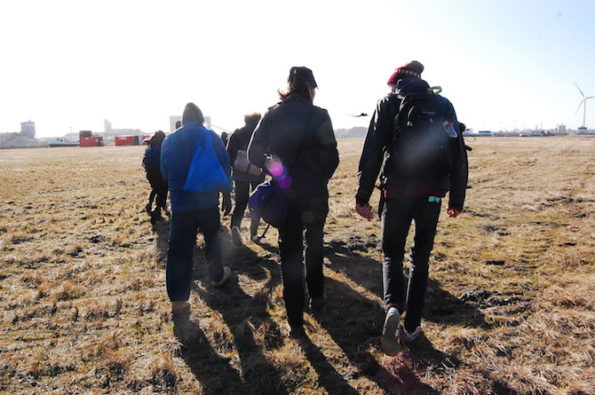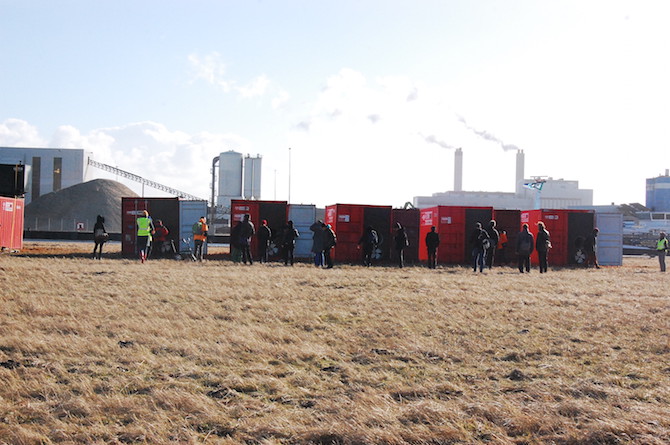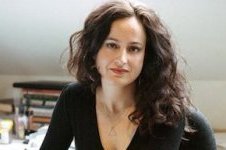Search
To search for an exact match, type the word or phrase you want in quotation marks.
A*DESK has been offering since 2002 contents about criticism and contemporary art. A*DESK has become consolidated thanks to all those who have believed in the project, all those who have followed us, debating, participating and collaborating. Many people have collaborated with A*DESK, and continue to do so. Their efforts, knowledge and belief in the project are what make it grow internationally. At A*DESK we have also generated work for over one hundred professionals in culture, from small collaborations with reviews and classes, to more prolonged and intense collaborations.
At A*DESK we believe in the need for free and universal access to culture and knowledge. We want to carry on being independent, remaining open to more ideas and opinions. If you believe in A*DESK, we need your backing to be able to continue. You can now participate in the project by supporting it. You can choose how much you want to contribute to the project.
You can decide how much you want to bring to the project.

It’s Sunday afternoon, the last day of Sonic Acts. This biannual festival has questioned and examined, since 1994, contemporary and historic developments of the human being in the intersection between art and technology, music or science. The 2015 edition is based on the premise that we are living in a new geological era: the Anthropocene [Haus der Kulturen der Welt, Berlin, conducted in 2013 and 2014 a two year project exploring this paradigm shift and its implications in art and science.]] the thesis of which defends nature is defined by humanity. A group of people of diverse ages and nationalities, wrapped up in polar fleeces and overcoats, get onto a red double decker bus in the centre of Amsterdam. The bus transports them to Raviv Ganchrow and his sound installation, [Long Wave Synthesis, commissioned for the festival, which explores the repercussions of infrasound in the landscape. Infrasound frequencies are inaudible to the human ear but perceptible through vibrations in the surroundings and the body.
Some dazed faces contemplate the changing scenery as the bus traverses the city, entering into the industrial suburbs heading towards Zanzibarhaven, Amsterdam West Port, where the installation is located. Others are engaged in conversations, about the different perspectives on infrasound inspired by the morning lectures given by Raviv Ganchrow, Jon Hagstrum and Hilel Schwart. The bus parks in front of a tree that indicates the route to be followed; stuck to it with a piece of black gaffer tape is an A3 crumpled poster where it’s only just possible to read the theme of the festival, The Geological Imagination. It’s sunny but there is an intense, cold wind blowing, which penetrates the skin. As they get off the bus everybody rushes to put on their hats and scarves, huddling into their big, warm jackets, before they begin to walk with all their senses pricked. In the surroundings of the harbour there are large merchant ships, a canal of choppy water, vigorous wind turbines, smoking chimneys, inactive industrial machinery, colossal piles of gravel, agitated reed beds, trees without leaves and ubiquitous factories. These frame a space designated ¨temporary nature¨ by the local Dutch authorities.
The damp, wintry grass of the vast field is not unlike straw. Not everyone is ready for the mud; one from the group grabs some plastic bags and improvises covers for his trainers. After a short walk the installation comes into sight. Six vibrant red ship containers, five of them grouped together with a sixth one to the left sustaining a eco-power supply source attached to the roof. Tea and coffee are offered inside, to help the new arrivals warm-up. A low pitched, penetrating sound, like the churn and rumble of a boats’ propeller can be perceived in the distance. Wasn’t infrasound supposed to be inaudible? The sound is the resonance of a pressure valve coming from the ‘loudspeakers’, installed inside the series of five containers that are especially designed to emit low frequencies. They emit sound archives of real-time recordings of infrasound in Bardufoss, Norway, propagating the geographical space with long waves of low frequency, in a range of 4 to 30 Hz, the majority of which are inaudible. On average, the human ear can hear sounds in a range from 20Hz (0.02Hz) to 20.000 Hz (20kHz). Infrasound are waves with very low frequencies, with tones between 4 and 16 Hz, that can only be perceived through vibrations in the body. This reproduction of infrasound is not common “the main technique is based in generating sound fields instead of sound sources” as Raviv explained in a on-site research presentation in the old Kilkene’s airport in the northern extremes of Norway. “The coordination of phase and amplitude in a group of traducers allows for the production of acoustic territories rather than the reproduction of sound”. Raviv explained it is a physical property that connects with the notion of landscape, for when sound is played back on this outdoor system, it does not appear as a mimetic copy but rather as a mediating element that allows points of entry into aspects of the immediate surroundings wouldn’t be accessible otherwise.

When the crowd approaches the site, they disperse, each person going their own way. With intense sonic attention they begin to interact with the piece, listening closely to the speakers, from behind and on the side, they make recordings with their phones, pressing their bodies against the containers and trying to identify the sensations in their bodies. The general feeling is a sense of listening to the edge of a sound that is falling but that continues to vibrate. Jeff Kolar, from the radio channel Radius (Chicago) comments that he perceives simultaneous sensations, not just low end sound vibrations but also long waves, “I can hear this really high pitch tone when I am very close to it”. One of those present, Mark Meeuwenoord, lecturer in communication and multimedia from the Avans University of Applied Sciences mentions that the experience is above all corporal, “it’s like being in a boat your whole body is incorporated in the environment”. The piece in this way creates different layers of listening, interior and exterior, something Raviv himself had already worked with and explained in a conference in the 2010 edition of Sonic Acts where he talked about the double condition of listening: “the space of acoustics and the way we perceive sound is located intimately in the space of our body”.
After a while the installation stops being the focal point. The group of visitors begin to explore the space and walk around the harbour. From a distance their fluctuating movements resemble ants disseminated in a (sonorous) territory. Raviv achieves his aim: to provoke an ambulant listening. The auditory exploration makes it possible to occupy the landscape through listening and to perceive space in a non-linear way, non-geographically, in a psychophysical form, where sound and space are the result of human senses. An experience he sustains that enables an awareness of the bandwidth of our environment, where in contrast to the perceptible sounds that interact only with small and close objects, there are naturally or artificially produced waves of infrasound that can travel up to over 100km, interacting with the topography and even the atmosphere. Long Wave Synthesis, according to Raviv, reveals a fragment of a world, that of infrasound, that is colossal in scale.

Cecilia Martín is the arts and culture brand strategist. Cecilia is based in London and has founded the Cultural Connection (CC) network-agency that helps museums, art galleries, biennials, orchestras, auditoriums and universities around the world to break the mold and find new ways to connect with their public. Cecilia is a professor of Communication and Branding in Art for the Master of Contemporary Art of the IL3 at the University of Barcelona.
"A desk is a dangerous place from which to watch the world" (John Le Carré)